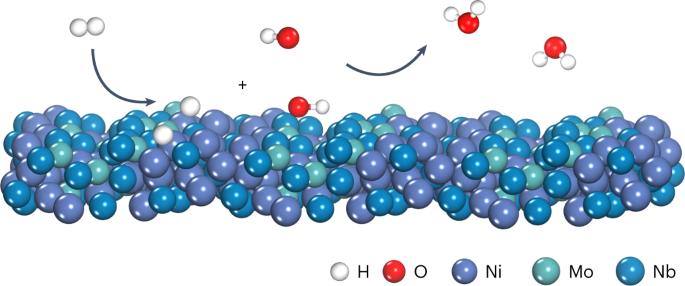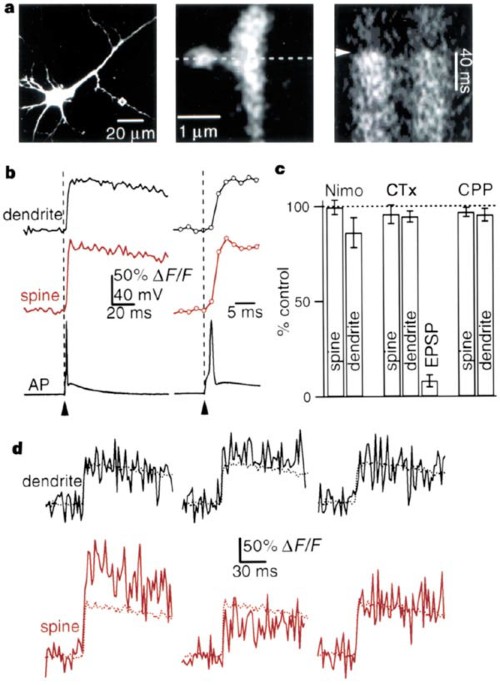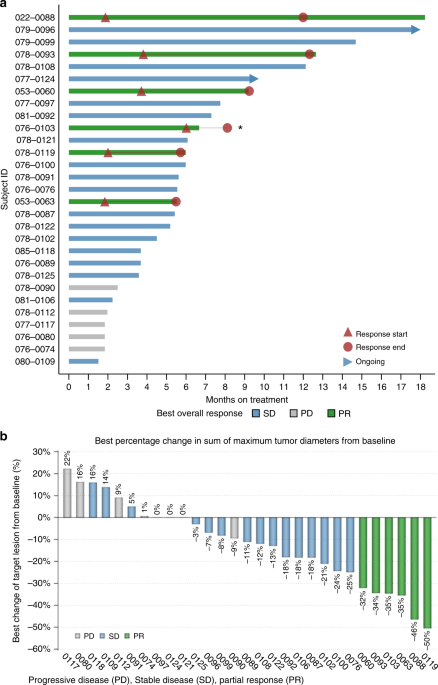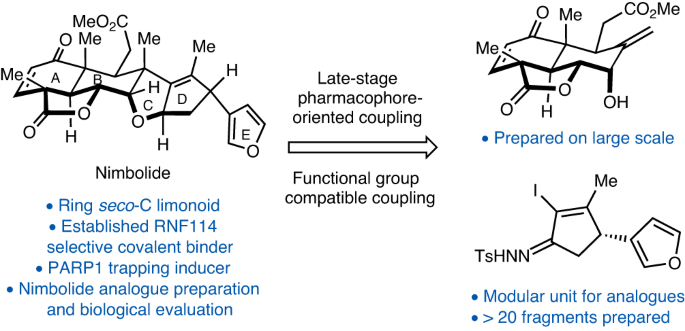
- Select a language for the TTS:
- UK English Female
- UK English Male
- US English Female
- US English Male
- Australian Female
- Australian Male
- Language selected: (auto detect) - EN
Play all audios:
ABSTRACT We have identified a silencer and an antisilencing element that interact at a distance of 85 kilobases to regulate expression of the recombination activating genes _Rag1_ and _Rag2_
in thymocytes. Transgenic experiments showed that _Rag_ promoter-proximal _cis_ elements directed tissue-specific expression and that a Runx-dependent intergenic silencer suppressed
expression in developing T cells. Deletion of the antisilencing element from the genomic _Rag_ locus unmasked the intergenic silencer and abrogated _Rag_ expression in developing CD4+CD8+ T
cells. We speculate that the _Rag_ antisilencing element belongs to a class of _cis_ elements that might be useful for genome diversification by activating genes encoded by otherwise silent
transposable elements. Access through your institution Buy or subscribe This is a preview of subscription content, access via your institution ACCESS OPTIONS Access through your institution
Subscribe to this journal Receive 12 print issues and online access $209.00 per year only $17.42 per issue Learn more Buy this article * Purchase on SpringerLink * Instant access to full
article PDF Buy now Prices may be subject to local taxes which are calculated during checkout ADDITIONAL ACCESS OPTIONS: * Log in * Learn about institutional subscriptions * Read our FAQs *
Contact customer support SIMILAR CONTENT BEING VIEWED BY OTHERS FUNCTIONAL REGULATION OF AN ANCESTRAL RAG TRANSPOSON _PROTORAG_ BY A _TRANS_-ACTING FACTOR YY1 IN LANCELET Article Open access
09 September 2020 ENDOGENOUS RETROVIRUSES ARE A SOURCE OF ENHANCERS WITH ONCOGENIC POTENTIAL IN ACUTE MYELOID LEUKAEMIA Article Open access 14 July 2020 THE TY1 RETROTRANSPOSON HARBORS A
DNA REGION THAT PERFORMS DUAL FUNCTIONS AS BOTH A GENE SILENCING AND CHROMATIN INSULATOR Article Open access 18 July 2024 ACCESSION CODES ACCESSIONS GENBANK/EMBL/DDBJ * AY215076 REFERENCES *
Schatz, D.G., Oettinger, M.A. & Baltimore, D. The V(D)J recombination activating gene, RAG-1. _Cell_ 59, 1035–1048 (1989). Article CAS Google Scholar * Oettinger, M.A., Schatz, D.G.,
Gorka, C. & Baltimore, D. RAG-1 and RAG-2, adjacent genes that synergistically activate V(D)J recombination. _Science_ 248, 1517–1523 (1990). Article CAS Google Scholar * McBlane,
J.F. et al. Cleavage at a V(D)J recombination signal requires only RAG1 and RAG2 proteins and occurs in two steps. _Cell_ 83, 387–395 (1995). Article CAS Google Scholar * Schluter, S.F.
& Marchalonis, J.J. Cloning of shark RAG2 and characterization of the RAG1/RAG2 gene locus. _FASEB J._ 17, 470–472 (2003). Article CAS Google Scholar * Mombaerts, P. et al.
RAG-1-deficient mice have no mature B and T lymphocytes. _Cell_ 68, 869–877 (1992). Article CAS Google Scholar * Shinkai, Y. et al. RAG-2-deficient mice lack mature lymphocytes owing to
inability to initiate V(D)J rearrangement. _Cell_ 68, 855–867 (1992). Article CAS Google Scholar * Wilson, A., Held, W. & MacDonald, H. Two waves of recombinase gene expression in
developing thymocytes. _J. Exp. Med._ 179, 1355–1360 (1994). Article CAS Google Scholar * Petrie, H. et al. Multiple rearrangements in T cell receptor α chain genes maximize the
production of useful thymocytes. _J. Exp. Med._ 178, 615–622 (1993). Article CAS Google Scholar * Shinkai, Y. et al. Restoration of T cell development in RAG-2-deficient mice by
functional TCR transgenes. _Science_ 259, 822–825 (1993). Article CAS Google Scholar * von Boehmer, H. & Fehling, H.J. Structure and function of the pre-T cell receptor. _Annu. Rev.
Immunol._ 15, 433–452 (1997). Article CAS Google Scholar * Turka, L.A. et al. Thymocyte expression of RAG-1 and RAG-2: termination by T cell receptor cross-linking. _Science_ 16, 778–781
(1991). Article Google Scholar * Borgulya, P., Kishi, H., Uematsu, Y. & von Boehmer, H. Exclusion and inclusion of α and β T cell receptor alleles. _Cell_ 69, 529–537 (1992). Article
CAS Google Scholar * Yannoutsos, N. et al. The role of recombination activating gene (RAG) reinduction in thymocyte development _in vivo_ . _J. Exp. Med._ 194, 471–480 (2001). Article CAS
Google Scholar * Guo, J. et al. Regulation of the TCRα repertoire by the survival window of CD4+CD8+ thymocytes. _Nat. Immunol._ 3, 469–476 (2002). Article Google Scholar * Gay, D.,
Saunders, T., Camper, S. & Weigert, M. Receptor editing: an approach by autoreactive B cells to escape tolerance. _J. Exp. Med._ 177, 999–1008 (1993). Article CAS Google Scholar *
Tiegs, S.L., Russell, D.M. & Nemazee, D. Receptor editing in self-reactive bone marrow B cells. _J. Exp. Med._ 177, 1009–1020 (1993). Article CAS Google Scholar * Yu, W. et al.
Continued RAG expression in late stages of B cell development and no apparent re-induction after immunization. _Nature_ 400, 682–687 (1999). Article CAS Google Scholar * Monroe, R.J. et
al. RAG2:GFP knockin mice reveal novel aspects of RAG2 expression in primary and peripheral lymphoid tissues. _Immunity_ 11, 201–212 (1999). Article CAS Google Scholar * Monroe, R.J.,
Chen, F., Ferrini, R., Davidson, L. & Alt, F.W. RAG2 is regulated differentially in B and T cells by elements 5′ of the promoter. _Proc. Natl. Acad. Sci. USA_ 96, 12713–12718 (1999).
Article CAS Google Scholar * Yu, W. et al. Coordinate regulation of RAG1 and RAG2 by cell type-specific DNA elements 5′ of RAG2. _Science_ 285, 1080–1084 (1999). Article CAS Google
Scholar * Hsu, L.Y. et al. A conserved transcriptional enhancer regulates RAG gene expression in developing B cells. _Immunity_ 19, 105–117 (2003). Article CAS Google Scholar * Fuller,
K. & Storb, U. Identification and characterization of the murine Rag1 promoter. _Mol. Immunol._ 34, 939–954 (1997). Article CAS Google Scholar * Miranda, G.A. et al. Combinatorial
regulation of the murine RAG-2 promoter by Sp1 and distinct lymphocyte-specific transcription factors. _Mol. Immunol._ 38, 1151–1159 (2002). Article CAS Google Scholar * Li, Q., Peterson,
K.R., Fang, X. & Stamatoyannopoulos, G. Locus control regions. _Blood_ 100, 3077–3086 (2002). Article CAS Google Scholar * Muller, H. Types of visible variations induced by X-rays in
Drosophila. _J. Genet._ 22, 299–334 (1930). Article Google Scholar * Wakimoto, B.T. Beyond the nucleosome: epigenetic aspects of position-effect variegation in Drosophila. _Cell_ 93,
321–324 (1998). Article CAS Google Scholar * Grosveld, F., van Assendelft, G.B., Greaves, D.R. & Kollias, G. Position-independent, high-level expression of the human β-globin gene in
transgenic mice. _Cell_ 51, 975–985 (1987). Article CAS Google Scholar * Bonifer, C., Yannoutsos, N., Kruger, G., Grosveld, F. & Sippel, A.E. Dissection of the locus control function
located on the chicken lysozyme gene domain in transgenic mice. _Nucleic Acids Res._ 22, 4202–4210 (1994). Article CAS Google Scholar * Lakso, M. et al. Efficient _in vivo_ manipulation
of mouse genomic sequences at the zygote stage. _Proc. Natl. Acad. Sci. USA_ 93, 5860–5865 (1996). Article CAS Google Scholar * Festenstein, R. et al. Locus control region function and
heterochromatin-induced position effect variegation. _Science_ 271, 1123–1125 (1996). Article CAS Google Scholar * de Boer, J. et al. Transgenic mice with hematopoietic and lymphoid
specific expression of Cre. _Eur. J. Immunol._ 33, 314–325 (2003). Article CAS Google Scholar * Taniuchi, I., Sunshine, M.J., Festenstein, R. & Littman, D.R. Evidence for distinct CD4
silencer functions at different stages of thymocyte differentiation. _Mol. Cell_ 10, 1083–1096 (2002). Article CAS Google Scholar * Taniuchi, I. et al. Differential requirements for Runx
proteins in CD4 repression and epigenetic silencing during T lymphocyte development. _Cell_ 111, 621–633 (2002). Article CAS Google Scholar * Rajewsky, N., Socci, N.D., Zapotocky, M.
& Siggia, E.D. The evolution of DNA regulatory regions for proteo-γ bacteria by interspecies comparisons. _Genome Res._ 12, 298–308 (2002). Article CAS Google Scholar * Zavolan, M.,
Rajewsky, K., Socci, N.D. & Gaasterland, T. SMASHing regulatory sites in DNA by human-mouse sequence comparisons. _Proc. Comput. Systems Bioinformatics_ CSB2003, 277–286 (2003). Google
Scholar * Dillon, N. & Festenstein, R. Unravelling heterochromatin: competition between positive and negative factors regulates accessibility. _Trends Genet._ 18, 252–258 (2002).
Article CAS Google Scholar * Milot, E. et al. Heterochromatin effects on the frequency and duration of LCR-mediated gene transcription. _Cell_ 87, 105–114 (1996). Article CAS Google
Scholar * Kioussis, D. & Festenstein, R. Locus control regions: overcoming heterochromatin-induced gene inactivation in mammals. _Curr. Opin. Genet. Dev._ 7, 614–619 (1997). Article
CAS Google Scholar * Baxter, J., Merkenschlager, M. & Fisher, A.G. Nuclear organisation and gene expression. _Curr. Opin. Cell Biol._ 14, 372–376 (2002). Article CAS Google Scholar
* Francastel, C., Walters, M.C., Groudine, M. & Martin, D.I. A functional enhancer suppresses silencing of a transgene and prevents its localization close to centrometric
heterochromatin. _Cell_ 99, 259–269 (1999). Article CAS Google Scholar * Lundgren, M. et al. Transcription factor dosage affects changes in higher order chromatin structure associated
with activation of a heterochromatic gene. _Cell_ 103, 733–743 (2000). Article CAS Google Scholar * Flajnik, M.F. Comparative analyses of immunoglobulin genes: surprises and portents.
_Nat. Rev. Immunol._ 2, 688–698 (2002). Article CAS Google Scholar * Agrawal, A., Eastman, Q.M. & Schatz, D.G. Transposition mediated by RAG1 and RAG2 and its implications for the
evolution of the immune system. _Nature_ 394, 744–751 (1998). Article CAS Google Scholar * Hiom, K., Melek, M. & Gellert, M. DNA transposition by the RAG1 and RAG2 proteins: a
possible source of oncogenic translocations. _Cell_ 94, 463–470 (1998). Article CAS Google Scholar * Misulovin, Z., Yang, X.W., Yu, W., Heintz, N. & Meffre, E. A rapid method for
targeted modification and screening of recombinant bacterial artificial chromosome. _J. Immunol. Methods_ 257, 99–105 (2001). Article CAS Google Scholar * Bunting, M., Bernstein, K.E.,
Greer, J.M., Capecchi, M.R. & Thomas, K.R. Targeting genes for self-excision in the germ line. _Genes Dev._ 13, 1524–1528 (1999). Article CAS Google Scholar * Jareborg, N., Birney, E.
& Durbin, R. Comparative analysis of noncoding regions of 77 orthologous mouse and human gene pairs. _Genome Res._ 9, 815–824 (1999). Article CAS Google Scholar * Altschul, S.F.,
Gish, W., Miller, W., Myers, E.W. & Lipman, D.J. Basic local alignment search tool. _J. Mol. Biol._ 215, 403–410 (1990). Article CAS Google Scholar * Nagaoka, H.,
Gonzalez-Aseguinolaza, G., Tsuji, M. & Nussenzweig, M.C. Immunization and infection change the number of recombination activating gene (RAG)-expressing B cells in the periphery by
altering immature lymphocyte production. _J. Exp. Med._ 191, 2113–2120 (2000). Article CAS Google Scholar Download references ACKNOWLEDGEMENTS We thank K. Velinzon for flow cytometry cell
sorting; members of the Nussenzweig laboratory and D. Dorsett for discussions; E. Besmer for help with the manuscript, and M. Zavolan for discussions and help with customizing SMASH; and D.
Kioussis for the CD2 cassette. Supported in part by National Institutes of Health and Howard Hughes Medical Institute (M.C.N.). AUTHOR INFORMATION Author notes * Ziva Misulovin Present
address: Department of Genetics, Washington University School of Medicine, St. Louis, Missouri, 63110, USA * Wong Yu & Nikolaus Rajewsky Present address: Department of Biology, New York
University, Washington Square, New York, New York, 10003-6688, USA * Bernardo R Peixoto Present address: Molecular Genetic and Pathology Unit, Hospital Divino Espirito Santo, 9500, Azores,
Portugal AUTHORS AND AFFILIATIONS * Laboratory of Molecular Immunology, Rockefeller University, New York, 10021, New York, USA Nikos Yannoutsos, Ziva Misulovin, Anna Gazumyan, Wong Yu,
Bernardo R Peixoto, Thomas Eisenreich & Michel C Nussenzweig * Howard Hughes Medical Institute, Rockefeller University, New York, 10021, New York, USA Vasco Barreto, Ziva Misulovin, Anna
Gazumyan, Thomas Eisenreich & Michel C Nussenzweig * Center of Studies in Physics and Biology, Rockefeller University, New York, 10021, New York, USA Nikolaus Rajewsky * Stanford
University Medical School, Stanford, California, 94305-5323, USA Wong Yu Authors * Nikos Yannoutsos View author publications You can also search for this author inPubMed Google Scholar *
Vasco Barreto View author publications You can also search for this author inPubMed Google Scholar * Ziva Misulovin View author publications You can also search for this author inPubMed
Google Scholar * Anna Gazumyan View author publications You can also search for this author inPubMed Google Scholar * Wong Yu View author publications You can also search for this author
inPubMed Google Scholar * Nikolaus Rajewsky View author publications You can also search for this author inPubMed Google Scholar * Bernardo R Peixoto View author publications You can also
search for this author inPubMed Google Scholar * Thomas Eisenreich View author publications You can also search for this author inPubMed Google Scholar * Michel C Nussenzweig View author
publications You can also search for this author inPubMed Google Scholar CORRESPONDING AUTHORS Correspondence to Nikos Yannoutsos or Michel C Nussenzweig. ETHICS DECLARATIONS COMPETING
INTERESTS The authors declare no competing financial interests. SUPPLEMENTARY INFORMATION SUPPLEMENTARY FIG. 1 (PDF 1692 KB) SUPPLEMENTARY FIG. 2 (PDF 620 KB) SUPPLEMENTARY FIG. 3 (PDF 181
KB) SUPPLEMENTARY TABLE 1 (PDF 18 KB) SUPPLEMENTARY TABLE 2 (PDF 23 KB) SUPPLEMENTARY METHODS (PDF 26 KB) RIGHTS AND PERMISSIONS Reprints and permissions ABOUT THIS ARTICLE CITE THIS ARTICLE
Yannoutsos, N., Barreto, V., Misulovin, Z. _et al._ A _cis_ element in the recombination activating gene locus regulates gene expression by counteracting a distant silencer. _Nat Immunol_
5, 443–450 (2004). https://doi.org/10.1038/ni1053 Download citation * Received: 06 January 2004 * Accepted: 22 January 2004 * Published: 14 March 2004 * Issue Date: 01 April 2004 * DOI:
https://doi.org/10.1038/ni1053 SHARE THIS ARTICLE Anyone you share the following link with will be able to read this content: Get shareable link Sorry, a shareable link is not currently
available for this article. Copy to clipboard Provided by the Springer Nature SharedIt content-sharing initiative




